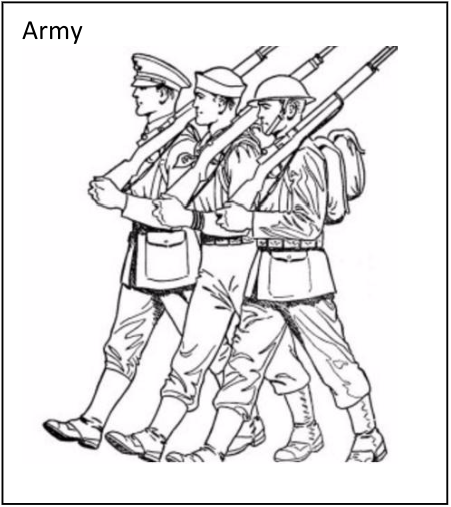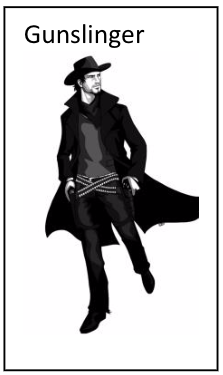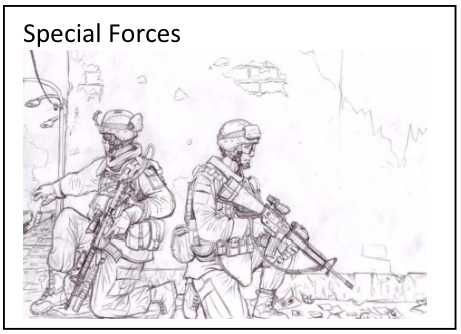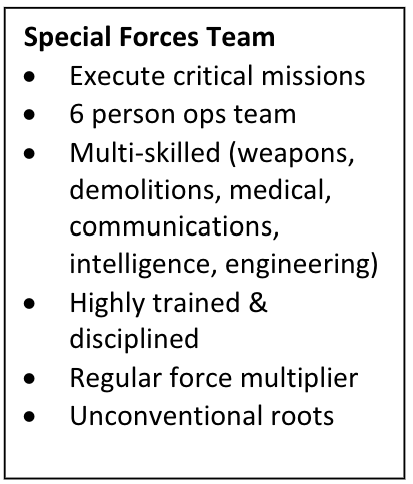100-year legacy
Listening to clients talk today, one hears a range of opinions about management consultants. And usually with a hint of skepticism, bemusement and even hostility. Perhaps nothing is new. But in the century-old management consulting industry, one may expect it to mature to a more certain place in future.
But there are emerging complications.
1. Management consulting is losing its mystique. McKinsey alone has 27,000 alumni, up from 21,000 in 2007; the alumni of the Big Three Strat Firms combined are approaching 50,000 (HBR). And with tens of thousands more from the Big Four accounting brands, consulting buyers have seen many consultants come and go. There are buyers who were consultants previously & know the game.
2. With this in mind also consider demographic trends. From the “Boomers” come an injection of capable, 55-65 executives and inexperienced client leads who start small then grow massive quickly - who need (and use) contract help but don’t care so much about firm brands unless they have to.
Confusing times

A helpful way to look at the changing consulting profession is by examining the different types of consultants through a military unit lens.
Large leveraged firms (branded); and independent consultants, are two archetypal models affected by these complications. Today, the branded firms (or armies) are coming under increasing rate pressure, with changing buying patterns and new competitors. Their model has a triple whammy.
1. Front line teams often lack the experience of a single competent solo going after the same objective; and this relative capability gap has been noticed by clients.
2. The successful big firm consultant who gains experience, too quickly advances up the chain & actually stops consulting, to become a full time business owner / manager, client liaison and sales person.
3. Finally, the firms carry high overhead so price chopping makes them less competitive & further erodes the brand.
(Having said this, there are some big firms, and pockets within all of them that are overcoming this problem. In contrast, in some cases firms with very strong brands are unpalatably hired for the brand itself regardless of quality. But big firm growth & sustainability will be under increasing pressure if not matched to value.)
The other pervasive model, the niche independent (gunslinger), is able to provide insights & pragmatism based on experience. They work unleveraged & alone, or in loose collaborations. They also have challenges, to name a few:
in loose collaborations. They also have challenges, to name a few:
1. New competitors – many mid-life independent entrants & firms coming down market
2. Disruptive forces - can quickly render their niche too narrow e.g. implementation band width, greater combinations of technical skills required to keep pace
3. Age bias – there are stories of older consultants being turned down by “millennials”.
Of course there are many more variations, including the IT firms, but if one looks at the industry profile today these two archetypes abound. And “boutiques” will tend toward the attributes of one or other depending on size and business model.
Stepping up
What’s new?
We live in a hyper networked world with entire business models undergoing rapid change. Clients are under huge pressure to adapt. They must iterate quickly from understanding, to decision, to mobilization, to execution, to result using an array of information.
This requires five client capabilities:
1. Constantly sift through & quickly make sense of often democratized information
2. Make decisions about what to change effectively , without getting bogged down (analysis paralysis)
3. Identify, connect to and quickly mobilize external specialists / providers, & integrate with internal resources
4. Manage execution incrementally to achieve continuous improvement or step change result
5. Continuously adapt, and operate smoothly at the same time using limited resources
How to respond in consulting?

Think of a Special Forces unit. They are fit-for-purpose, non-leveraged, military teams who “pop-up” to take-on critical missions on the ground. In consulting, the equivalent would be senior management consultants combined with non-consulting experts (industry, technical) and tech solutions to implement change or innovation in a niche. Add to this a cautious willingness to interim manage & gain-share without compromising independence. Benefit to client is accelerated execution & capability building towards achieving a sustainable business reward.
Senior consulting skills would be vital to the mix – technical and industry specialists alone often battle to communicate their ideas and benefits at the right level, or to facilitate internal alignment and capability transition required for sustainable success.
New thinking
For example, mine sites have a typical question “where do I draw the boundary between ore and waste, and how do I extract ore precisely?” (Or a sub set of this issue.) Miners must consider volatile prices, limited understanding of the ore body and ever scarcer & difficult extraction towards end of mine life. Resolution requires multi-disciplines (planning, operations, geology, metallurgy, chemistry, engineering, information management). Yet working in silos and being remote, mine sites usually find it difficult to innovate using new digital & automation technologies available to miners, in some cases with catastrophic consequences. Economic resources sterilized, waste processed uneconomically, rampant capex. A consulting “army” or “gunslinger” cannot resolve this problem as they don’t have the range of either knowledge or execution capability, no matter specialty, size or reach. Most industries will have similar situations to varying degrees. Whereas a multi-skilled Special Forces-like team including a senior consultant working in a flexible manner, can.
Getting to a “special forces” model
A management consulting team like this has three fundamental roles – frame the priority & define the solution, against a business case; align the client organization while building capability to execute; and facilitate the execution including deployment of digital/automation requirements & paraphernalia. Defining the solution requires a clear understanding of the rapidly evolving “art of the possible” in that niche.
This requires four advanced capabilities from consultants to win the big prizes:
1. Senior-level professional consulting skills (usually gained from working in the big firms) such as - problem solving, influencing without authority,framing & communication of ideas, objectivity & questioning, etc.

2. A prior understanding & experience of the business niche in question (industry, function, process) to anticipate issues, solutions
3. Ability to connect to and facilitate relevant external and internal parties (technical, industry, CEO, front line) to deploy right expertise and tools (without becoming the “reseller” to avoid conflict of interest)
4. Considering all the above, an ability to limit the study phase and facilitate execution & knowledge transfer towards a specific change / result quickly.
Client perspective
For the client, the experience feels very different from the traditional “outside in” intervention. The consulting team are embedded working along-side & at ground level to help build change more organically and sustainably. Client leaders quickly perceive this team as an extension of their own reach. The team will use “enough information & analysis” to drive change forward more quickly.
With the Special Forces analogy in mind, clients can ask revealing questions before hiring consultants:
1. From what you see after an initial briefing, do you have a hypothesis regarding the problem and solution? (see if they provide good examples showing practical insight, done it before)
2. Describe the kind of team you would deploy? (each member has niche skills to form a cohesive capability and compliment the client)
3. What is your style of working with us? (key words – knowledge transfer, embedded, implementation, capability building, sustainability, result, innovation)
4. What are the latest innovations in our (client) business niche today? How can we leverage “disruption”? (examples of how they may be partnering with digital players)
--
About the Author
 Alan is a senior business consultant & coach with over 20 years’ experience creating value mainly in global heavy industry including mining, energy and transportation. He worked 10+ years in big firm consulting, 10+ years as partner & other senior roles in 2 boutique firms; and 3 years as an independent. He has conducted over 70 engagements including with most major global mining companies, their suppliers and other large brand name organizations, both at site and head office level, in 8 countries. His work has generated over $75M of measurable annualized run rate improvements in the last 10 years. Alan is available for speaking, team facilitation, management consultation, formal continuous improvement & innovation training, business turn around, interim management and project management
Alan is a senior business consultant & coach with over 20 years’ experience creating value mainly in global heavy industry including mining, energy and transportation. He worked 10+ years in big firm consulting, 10+ years as partner & other senior roles in 2 boutique firms; and 3 years as an independent. He has conducted over 70 engagements including with most major global mining companies, their suppliers and other large brand name organizations, both at site and head office level, in 8 countries. His work has generated over $75M of measurable annualized run rate improvements in the last 10 years. Alan is available for speaking, team facilitation, management consultation, formal continuous improvement & innovation training, business turn around, interim management and project management
Contact: alan.young-pugh@sympatico.ca +1-647-295-5213



